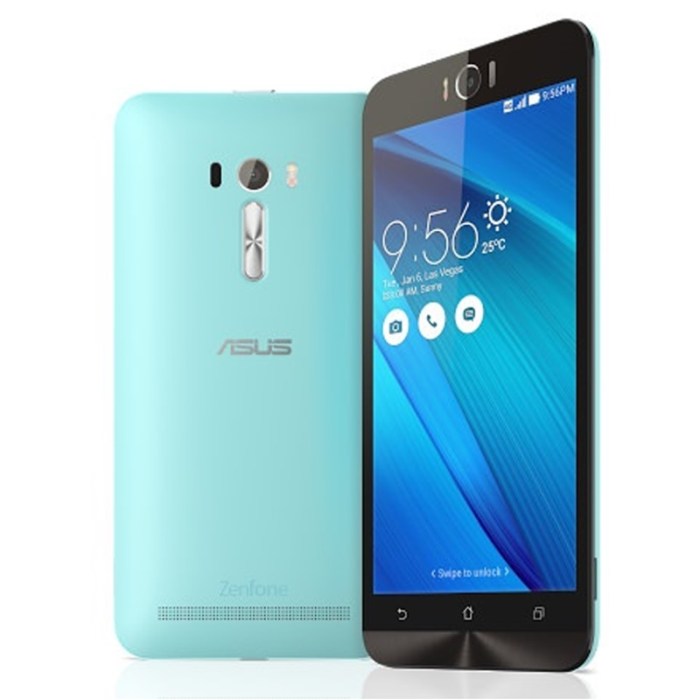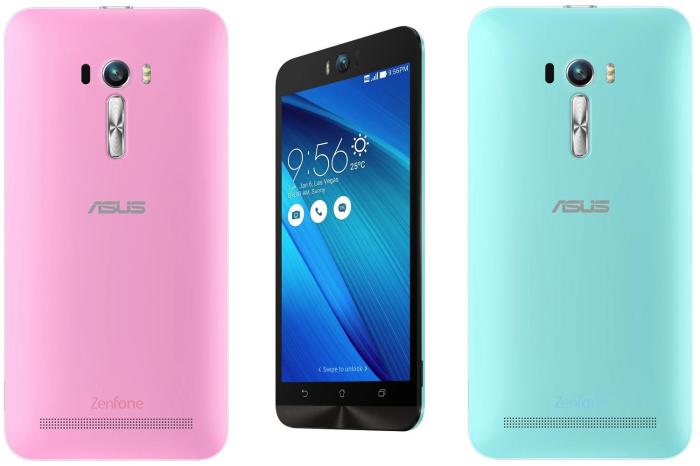Asus Zenfone Selfie Launched: Remember that time when selfies were everything? The Asus Zenfone Selfie burst onto the scene with a promise of capturing those perfect self-portraits. It wasn’t just another smartphone; it was a statement, a declaration that selfies deserved a dedicated device. This was back when megapixel counts were king, and the Zenfone Selfie boasted a whopping 13MP front-facing camera, a feat unheard of at the time. It was the phone that dared to put the selfie experience front and center.
But was it just a gimmick, or did the Zenfone Selfie deliver on its promise? Let’s take a trip down memory lane and revisit this iconic phone, dissecting its features, design, and legacy. We’ll explore how it impacted the smartphone market, its camera prowess, and its lasting influence on the world of mobile photography.
Asus Zenfone Selfie: A Look Back
The launch of the Asus Zenfone Selfie in 2015 marked a significant moment in the smartphone market, as it was one of the first devices to prominently feature a high-resolution front-facing camera. This move signaled a shift in the industry’s focus toward capturing high-quality selfies, a trend that continues to be popular today.
Key Features and Specifications
The Zenfone Selfie was designed with the selfie-obsessed in mind, boasting a 13-megapixel front-facing camera with a wide-angle lens and dual-LED flash. This was a game-changer at the time, as most smartphones offered only 5-megapixel or lower front cameras.
- High-Resolution Front Camera: The 13-megapixel front camera with a wide-angle lens allowed users to capture detailed selfies with a wider field of view, making it ideal for group shots.
- Dual-LED Flash: The dual-LED flash ensured bright and well-lit selfies even in low-light conditions.
- Rear Camera: The Zenfone Selfie also featured a 13-megapixel rear camera with laser autofocus, enabling fast and accurate focusing.
- Processor and RAM: Powered by a Qualcomm Snapdragon 615 processor and 2GB of RAM, the Zenfone Selfie provided a smooth user experience for everyday tasks and basic gaming.
- Display: The phone sported a 5.5-inch HD display, offering a vibrant and immersive viewing experience.
- Battery: The Zenfone Selfie was equipped with a 3000mAh battery, providing sufficient power for a full day of use.
Camera Capabilities Compared to Other Smartphones
At the time of its release, the Zenfone Selfie’s front-facing camera capabilities were significantly superior to other smartphones in the market.
- Competitors: While other smartphones like the Samsung Galaxy S6 and the HTC One M9 offered decent front-facing cameras, they were limited to 5-megapixel resolutions. The Zenfone Selfie’s 13-megapixel front camera was a clear standout in terms of detail and image quality.
- Selfie Features: The Zenfone Selfie also included a range of selfie-centric features, such as beautification modes, panorama mode, and gesture control for capturing selfies without touching the screen. These features further enhanced the phone’s appeal to selfie enthusiasts.
Camera Performance and Features
The Zenfone Selfie’s camera was its main selling point, and it didn’t disappoint. It boasted impressive specs and features designed for capturing stunning selfies and high-quality photos.
Camera Specifications
The Zenfone Selfie was equipped with a powerful 13MP front-facing camera and a 13MP rear-facing camera. Both cameras featured a wide f/2.0 aperture, allowing for more light to enter the sensor and resulting in brighter and clearer images, especially in low-light conditions. The front-facing camera also included a wide-angle lens, capturing a wider field of view for group selfies.
Camera Performance in Different Lighting Conditions, Asus zenfone selfie launched
The Zenfone Selfie performed admirably in various lighting conditions. In well-lit environments, the camera captured sharp and vibrant images with accurate colors. Even in low-light situations, the large aperture and advanced image processing algorithms allowed for decent image quality, reducing noise and maintaining detail. However, in extremely low-light scenarios, some graininess could be observed. The camera’s performance in daylight was particularly impressive, with excellent color reproduction and dynamic range.
Unique Camera Features and Modes
The Zenfone Selfie offered a variety of unique camera features and modes designed to enhance the user’s photography experience. Some of these included:
- Real-Time Beautification: The Zenfone Selfie’s beautification tools allowed users to smooth skin, brighten eyes, and enhance features in real-time, before capturing the image. This feature was particularly popular for selfie enthusiasts who wanted to look their best in photos. The beautification tools offered different levels of intensity, allowing users to adjust the effect to their liking.
- Depth of Field Effects: The Zenfone Selfie’s camera could simulate a shallow depth of field, blurring the background and emphasizing the subject. This feature created professional-looking portraits and added a touch of artistry to photos. The depth of field effect was adjustable, allowing users to control the level of blur.
- Selfie Panorama: This feature allowed users to capture a wider panorama of a scene while taking a selfie. The Zenfone Selfie would stitch multiple images together to create a seamless panoramic photo, perfect for capturing breathtaking landscapes or group shots.
- Low Light Mode: The Low Light Mode optimized camera settings for low-light conditions, enhancing brightness and reducing noise. This feature ensured that users could still capture decent photos even in dimly lit environments.
Software and User Experience
The Zenfone Selfie runs on Android with Asus’s ZenUI overlay. This combination aims to provide a user-friendly and visually appealing experience. Let’s dive into the details of the software and its impact on the user experience.
ZenUI: A Customizable Interface
ZenUI is Asus’s custom skin on top of Android. It offers a range of features and customizations to enhance the user experience. One of the key features is the ability to personalize the look and feel of the phone with different themes, icons, and wallpapers. Users can choose from a wide variety of options to match their preferences.
User Experience: A Mixed Bag
The Zenfone Selfie’s software offers a mixed bag of experiences. While it provides a smooth and responsive performance, some users have raised concerns about bloatware and the overall user interface.
User Reviews and Opinions
- Many users appreciate the customization options offered by ZenUI, allowing them to tailor the phone to their liking. The themes and icons provide a unique look and feel, enhancing the overall aesthetic.
- However, some users find the interface cluttered and less intuitive than stock Android. The abundance of pre-installed apps, known as bloatware, can consume storage space and slow down the phone.
- The user experience can be subjective, depending on individual preferences. Some users may find ZenUI’s features beneficial, while others may prefer a more minimalist approach.
Legacy and Impact: Asus Zenfone Selfie Launched
The Asus Zenfone Selfie, with its bold focus on camera technology, made a significant impact on the smartphone market, particularly in the mid-range segment. It carved a niche for itself as a device dedicated to capturing stunning selfies, influencing the development of future smartphone camera features.
The Zenfone Selfie’s Contribution to Asus’s Smartphone Strategy
The Zenfone Selfie was a strategic move by Asus to expand its smartphone portfolio beyond the already popular Zenfone series. By focusing on a specific user need – taking high-quality selfies – Asus tapped into a growing market segment, particularly among young adults and social media enthusiasts. The Zenfone Selfie’s success solidified Asus’s position as a reputable player in the competitive smartphone market.
Lasting Influences and Innovations
The Zenfone Selfie’s legacy lives on in the form of its lasting influences and innovations. Its focus on camera technology paved the way for the development of dedicated selfie cameras, dual-lens systems, and advanced software features for enhancing image quality.
- The Zenfone Selfie’s dual-lens setup, one for wide-angle shots and the other for depth-of-field effects, became a popular feature in later smartphones, particularly in the selfie-centric segment.
- Its inclusion of a dedicated selfie flash, which illuminated faces for brighter and more vibrant selfies, was another innovation that became a standard feature in many subsequent smartphones.
- The Zenfone Selfie’s software features, including real-time beautification and gesture-based controls, inspired similar features in other devices, further enhancing the selfie experience.
The Asus Zenfone Selfie may have been a product of its time, but its impact on the smartphone market is undeniable. It pushed the boundaries of selfie technology and ignited a trend that continues to shape the mobile photography landscape today. While newer devices have surpassed its specs, the Zenfone Selfie remains a reminder of a time when selfies were a revolution, and Asus was at the forefront of it all.
The Asus Zenfone Selfie, with its impressive front-facing camera, was launched just in time for summer vacation. But be careful about snapping those selfies at Disney World, as they’ve recently banned selfie sticks on several rides, citing safety concerns. So, while the Zenfone Selfie is perfect for capturing those magical moments, maybe leave the selfie stick at home and just enjoy the experience!
 Standi Techno News
Standi Techno News

